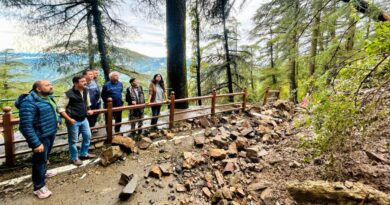Stone Fruits Take Center Stage: Himachal Hosts National Conclave to Rethink Orchard Futures
This November, the quiet orchards of Thanadhar in Kotgarh — the birthplace of Himachal’s apple revolution — will buzz with fresh ideas and hopeful conversations. The state is gearing up to host a national-level conclave focused on stone fruits, bringing together policymakers, scientists, traders, and growers to chart a new course for Himachal’s horticulture.
For decades, apples have been the crown jewel of Himachal’s fruit economy, making up nearly 80% of the state’s total fruit production. But beneath the glossy surface of this success story, growers have been grappling with rising costs, unpredictable weather, and stubborn diseases. The once-reliable apple crop is no longer the golden ticket it used to be.
“Apple farming is becoming harder to sustain,” said Deepak Singha, president of the Stone Fruit Growers’ Association. “Stone fruits like plum, apricot, cherry, and peach offer a way to diversify and stabilize income.”
The conclave aims to breathe new life into these lesser-celebrated fruits, many of which have been grown in the region for generations but often with outdated techniques. Discussions will center around modern rootstocks, improved cultivars, and better post-harvest infrastructure — all crucial for making stone fruit cultivation more viable and profitable.
One of the biggest advantages? Timing. Stone fruits are harvested from mid-April to late June, just before apple season kicks off in July. “This gives growers a chance to earn during the lean months,” Singha explained.
In places like Kotgarh, where apple trees have stood for over a century, replanting has become increasingly difficult. “The soil is tired, the diseases are relentless, and the saplings just don’t thrive like they used to,” said Prakash Thakur, former vice-chairman of the Himachal Pradesh Horticultural Produce Marketing and Processing Corporation (HPMC). “Stone fruits could be the answer — but growers must choose varieties suited to their altitude and climate.”
As the conclave unfolds in the same hills where Satyanand Stokes planted the first apple trees over a hundred years ago, Himachal’s fruit growers are once again being asked to imagine a new future — one that’s rooted in tradition but ready to branch out.



